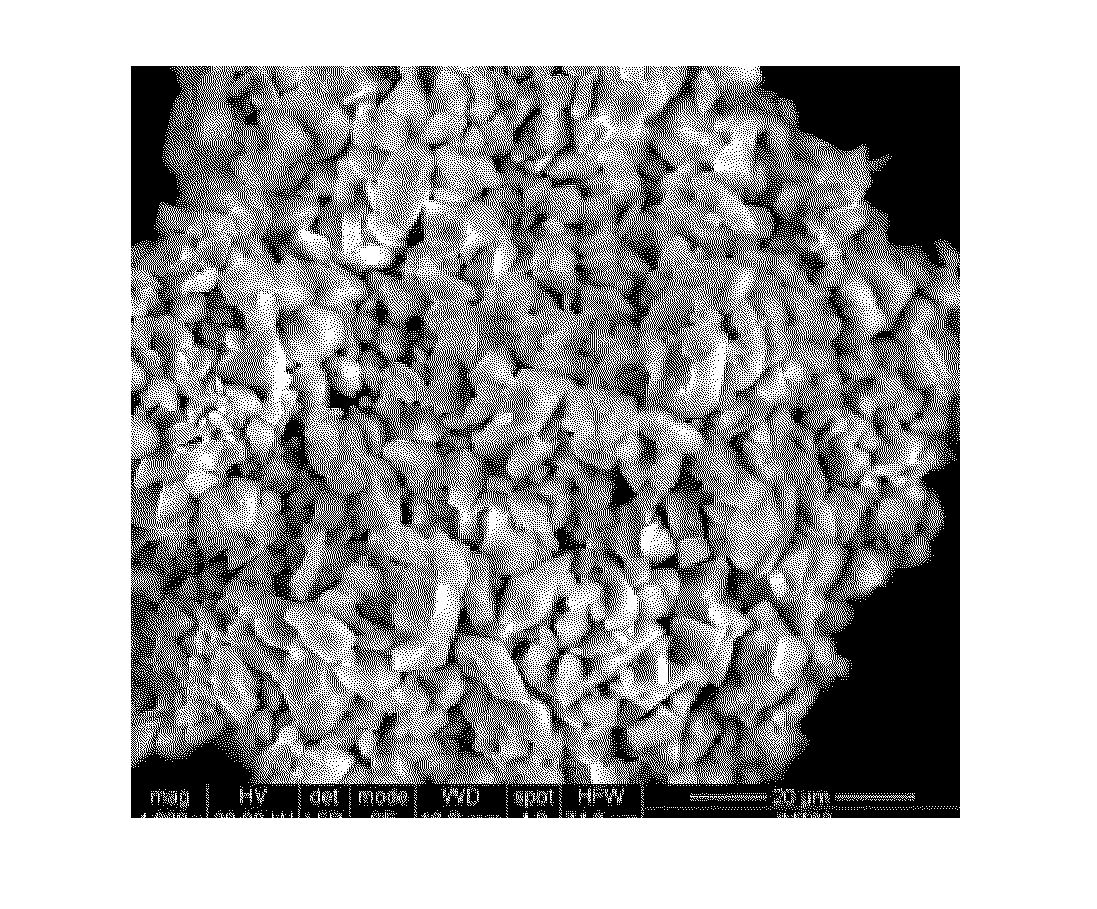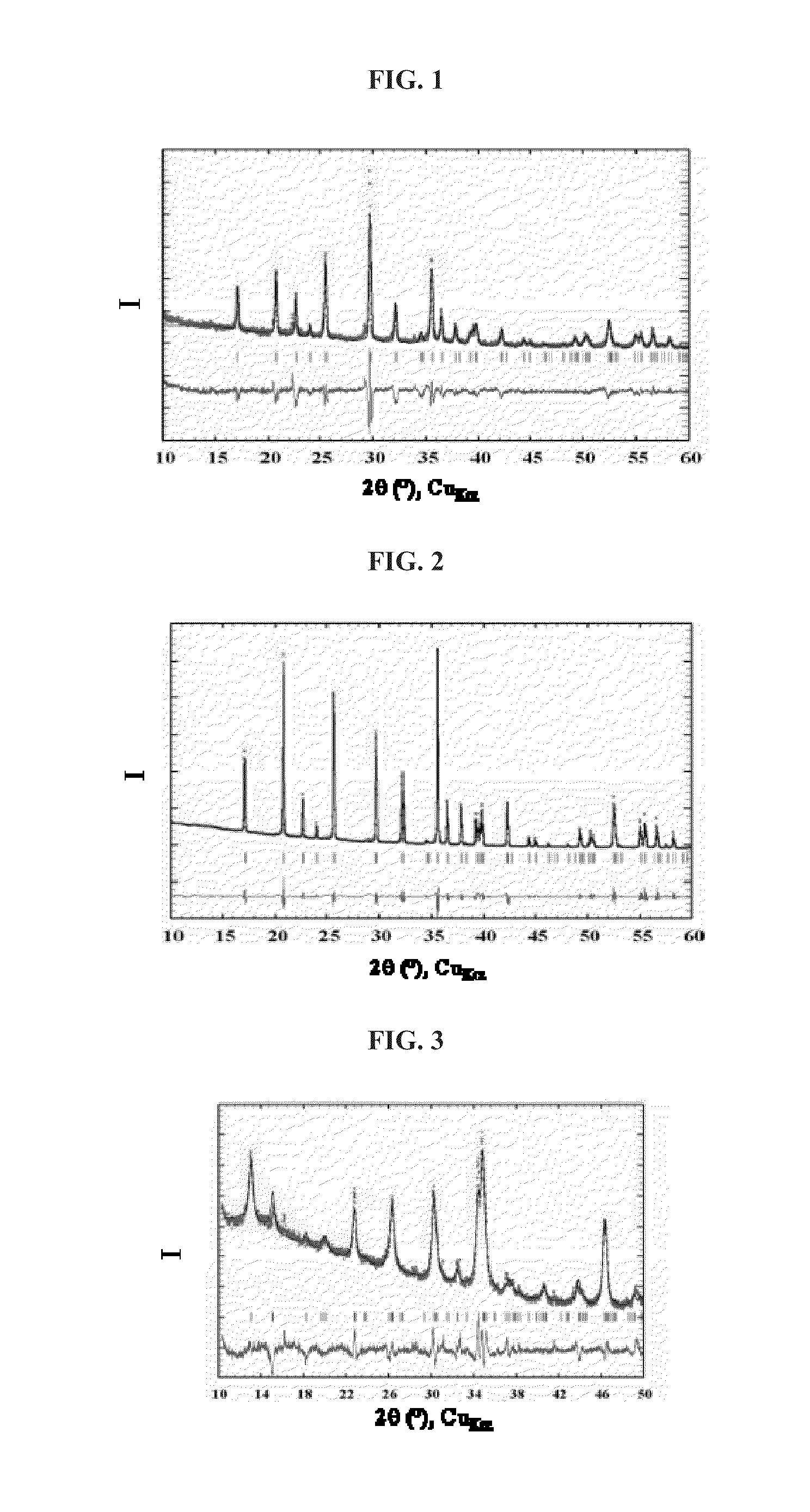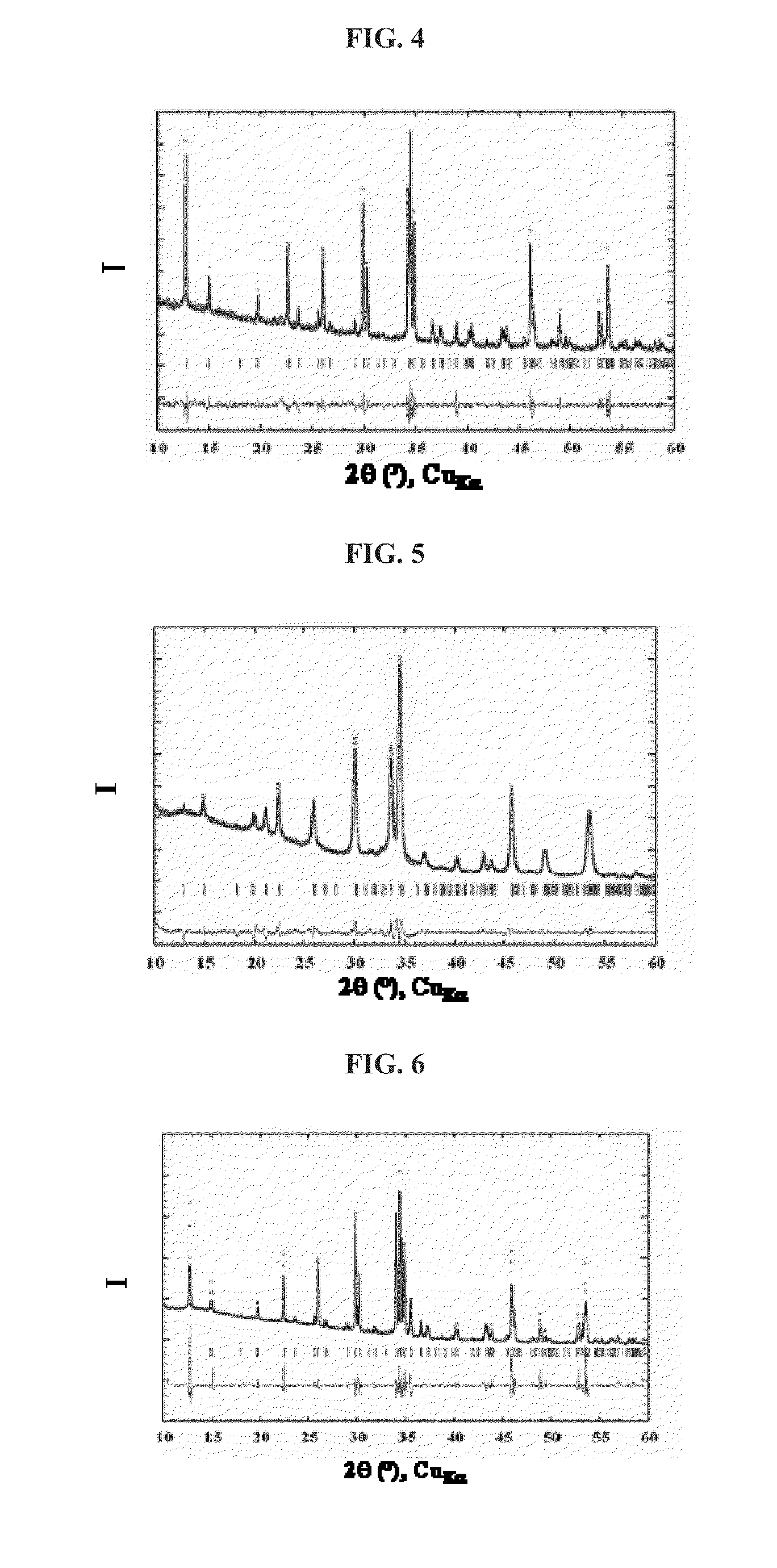Method for producing inorganic compounds
a technology of inorganic compounds and inorganic compounds, which is applied in the direction of silicon compounds, cell components, and nickel compounds, can solve the problems of affecting the expected stoichiometry, the energy consumption of ceramic methods, and the polydispersity of powders obtained, and achieves economic effects in terms of energy and starting materials
- Summary
- Abstract
- Description
- Claims
- Application Information
AI Technical Summary
Benefits of technology
Problems solved by technology
Method used
Image
Examples
example 2
Synthesis of LiFePO4 in the Ionic Liquid EMI-TFSI
[0106]The synthesis of LiFePO4 was performed by precipitation in a 50 ml round-bottomed flask. 0.524 g of 99% LiH2PO4 (Aldrich) and 0.908 g of Fe(C2O4).2H2O were added to 15 ml of EMI-TFSI. After stirring for 10 minutes, the suspension was brought to a temperature of 250° C. with a temperature increase rate of 1 C / minute. The temperature of the reaction medium was maintained at 250° C. for 24 hours, and the medium was then cooled to room temperature. After recovery by filtration, the LiFePO4 powder was washed with 50 ml of acetone, then with twice 50 ml of water and finally with 50 ml of acetone and dried in an oven at 60° C. 1.53 g of LiFePO4 were obtained in a yield of 97%.
[0107]The compound thus obtained was analyzed by X-ray diffraction with a copper cathode. The corresponding diffractogram is shown in the attached FIG. 2. It shows that the inorganic oxide LiFePO4 is a single phase that has the same orthorhombic structure as the s...
example 3
Synthesis of LiFePO4 in EMI-TFSI in the Presence of Traces of 1-tetradecyl-3-methylimidazolium bis(trifluoromethanesulfonyl)imide
[0109]The synthesis of LiFePO4 was performed in a bomb, 5×10−3 mol of LiH2PO4 and 5×10−3 mol of Fe(C2O4).2H2O were added to 10 ml of EMI-TFSI containing traces of 1-tetradecyl-3-methylimidazolium bis(trifluoromethane-sulfonyl)imide (used as surfactant to modify the form of the particles). After stirring, the reaction mixture was brought to a temperature of 250° C. with a temperature increase rate of 1° C. / minute. The temperature of the reaction medium was maintained at 250° C. for 24 hours, and the medium was then cooled to room temperature. After recovery, washing and drying as indicated above in Example 2, the expected product was obtained. Analysis by X-ray diffraction showed a single phase of LiFePO4.
example 4
Synthesis of LiFePO4 in 1-ethyl-3-methylimidazolium trifluoromethanesulfonate (EMI-triflate) containing traces of 1-tetradecyl-3-methylimidazolium bis(trifluoromethanesulfonyl)imide
[0110]The synthesis of LiFePO4 was performed in a bomb. 5×10−3 mol of LiH2PO4 and 5×10−3 mol of Fe(C2O4).2H2O were added to 10 ml of EMI-triflate containing traces of 1-tetradecyl-3-methylimidazolium bis(trifluoromethane-sulfonyl)imide (used as surfactant to modify the form of the particles). After stirring, the reaction mixture was brought to a temperature of 250° C. with a temperature increase rate of 1° C. / min. The temperature of the reaction medium was maintained at 250° C. for 24 hours, and the medium was then cooled to room temperature. After recovery, washing and drying as indicated above in Example 2, the expected product was obtained. Analysis by X-ray diffraction showed a single phase of LiFePO4.
PUM
 Login to View More
Login to View More Abstract
Description
Claims
Application Information
 Login to View More
Login to View More - R&D
- Intellectual Property
- Life Sciences
- Materials
- Tech Scout
- Unparalleled Data Quality
- Higher Quality Content
- 60% Fewer Hallucinations
Browse by: Latest US Patents, China's latest patents, Technical Efficacy Thesaurus, Application Domain, Technology Topic, Popular Technical Reports.
© 2025 PatSnap. All rights reserved.Legal|Privacy policy|Modern Slavery Act Transparency Statement|Sitemap|About US| Contact US: help@patsnap.com



